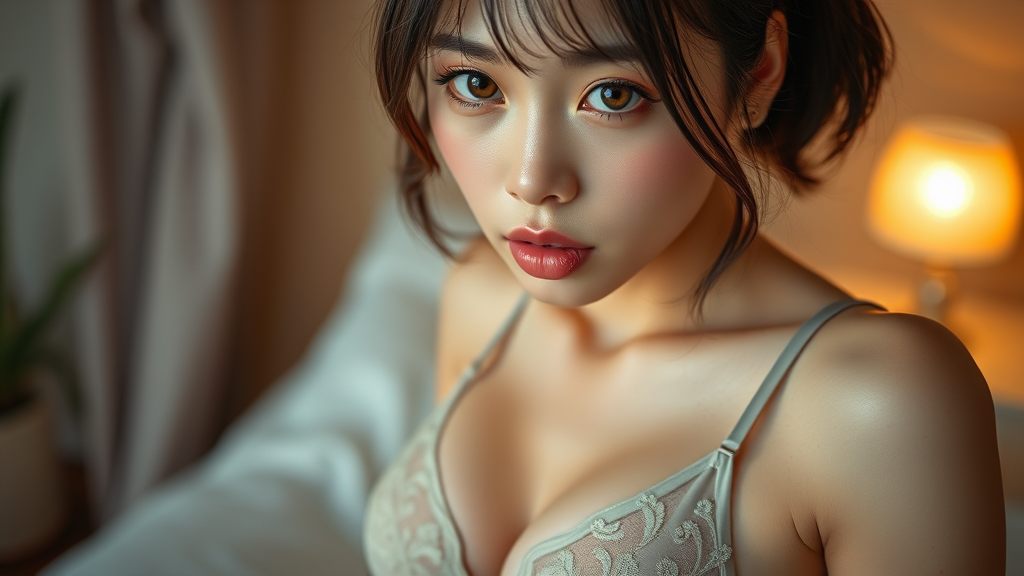
The Clothes Remover AI Tool
The Clothes Remover AI Tool is revolutionizing image editing by employing advanced technologies like deep learning and generative adversarial networks (GANs). This powerful capability allows users to effectively remove clothing from images while generating lifelike skin textures. As a result, it simplifies the editing process and broadens its applications across various fields, including fashion, film, and creative arts.
Key Takeaways:
- AI clothes removers leverage deep learning and GANs for realistic clothing removal and texture creation.
- These tools cut down on editing time and require little technical expertise, making them accessible to everyone.
- Potential uses include virtual try-ons in fashion and sophisticated post-production methods in film and television.
- Ethical and legal issues, such as consent and privacy, are vital considerations in the development and deployment of AI clothes removers.
- Upcoming advancements are likely to improve accuracy and realism, as well as enhance user interaction through augmented and virtual reality features.
Exclusive Free Trial
VIP Access
Free Trial
- Unlock Premium Content
- Exclusive Models & Features
- No Commitment, Cancel Anytime
Reviewed by Rowmance.net

Try GetImg.ai’s Free Trial Today
Unlock the potential of stunning visuals for your OnlyFans content with our easy-to-use service.

Try GetImg.ai’s Free Trial Today
Unlock the potential of stunning visuals for your OnlyFans content with our easy-to-use service.

How AI Clothes Removers Function
Core Technology
AI clothes removers rely heavily on deep learning and generative adversarial networks (GANs) to process and enhance images. These technologies analyze every pixel to detect and isolate the areas covered by clothing. By doing so, they not only remove the clothing but also generate realistic skin textures that fill in the spaces left behind. This capability to create lifelike results gives users the ability to swap or replace clothing items seamlessly.
Advantages Over Traditional Methods
The systematic approach of AI clothes removers marks a significant advancement over conventional photo editing techniques. Here’s why these tools stand out:
- High efficiency: Automation greatly reduces editing time, allowing for quick modifications.
- Realistic results: AI models produce lifelike textures that blend naturally with the skin.
- User-friendly: Minimal technical skill is required, making editing accessible to novices.
In short, these AI tools streamline the process of image editing, providing a more effective solution for various applications in fashion and photography.
Leading AI Clothes Remover Tools on the Market
These tools have garnered attention for their innovative approaches to altering images, particularly in the clothing removal niche. Here’s a comprehensive look at some of the top options available:
Key Features and Capabilities
- DeepNude AI: Known for its high output quality, it uses advanced algorithms to deliver realistic results. However, users should note the potential ethical implications of its use.
- Undress AI Pro: Offers impressive processing speeds alongside customizable settings. Users can adjust various parameters to fine-tune their output.
- Nudify.Online: This tool focuses on being user-friendly while maintaining good image quality. It’s suitable for those who want to achieve results quickly without compromising too much on detail.
- Undress.VIP: It stands out for its range of customization options, catering to users who demand more control over the final image.
- DeepArt Effects: Offers artistic styles along with its clothing removal function, making it a dual-purpose tool for creative edits.
Pricing and Accessibility
Pricing for these tools varies, often reflecting their unique features and capabilities. For example, while some may offer a free version, others have subscription plans or one-time payment options, allowing users to choose based on their needs and preferences.
Diverse Applications Across Industries
The potential uses for AI clothes removers stretch across various industries, showcasing their versatility and growing influence. Here are some specific applications that stand out:
Key Use Cases
- Fashion and E-Commerce: Virtual try-ons are revolutionizing the shopping experience. Customers can see how clothing fits without physically trying it on, significantly enhancing sales and reducing return rates.
- Film and Television Production: This technology streamlines visual effects processes, enabling creators to alter actors’ appearances seamlessly. It saves time and resources during post-production.
- Art and Creative Projects: Artists and designers can experiment with how clothing interacts with their work. The tool serves as an innovative method to visualize and modify designs.
- Adult Entertainment Industry: The technology caters to the demand for personalized content creation, allowing users to engage in immersive experiences while respecting privacy.
These applications reflect significant market trends and adoption rates. For example, the fashion tech market is projected to grow substantially, highlighting the demand for progressive tools such as AI clothes removers. By understanding these diverse contexts, individuals and businesses can harness the technology’s potential while driving innovation in their respective fields.
Navigating Ethical and Legal Challenges
Key Considerations
The introduction of AI clothes remover technology raises significant ethical and legal questions that must be addressed. Consent and privacy issues are at the forefront; users should always have clear communication regarding how their images will be processed and utilized.
Potential for misuse also looms large. This technology can be exploited for harmful purposes, such as non-consensual image manipulation or harassment. It’s crucial to consider the moral implications of developing and using such tools responsibly.
Copyright conflicts represent another critical aspect. Legislation across different regions varies, leading to complexity. For example, the EU’s General Data Protection Regulation (GDPR) emphasizes data privacy rights but doesn’t specifically address AI-generated content. Similarly, North American laws are inconsistent, with some states implementing stronger digital privacy protections than others.
When using AI technologies like this, stay informed about regional regulations to ensure compliance. It’s wise to consult legal experts if you’re uncertain, as this landscape continues to shift. Keeping ethical considerations in mind fosters trust and integrity in using advanced technologies, creating a safer environment for everyone involved.
Emerging Trends and Future Prospects
Advancements in AI Clothes Remover Technology
The future of AI clothes remover technology looks promising, with several trends shaping its evolution. Experts anticipate that advancements will focus on improving accuracy and realism, allowing for more lifelike edits. This will likely enhance the user experience significantly.
Incorporating augmented and virtual reality into these tools is also on the horizon. By merging AI capabilities with immersive technologies, users will obtain a more interactive and engaging digital editing experience. Progress in video processing is expected to follow suit, enabling dynamic changes not just in images but also in moving content.
Another critical aspect of this future landscape is the development of safeguards and ethical guidelines. As this technology advances, experts predict that these measures will address potential concerns, ensuring responsible usage while promoting creativity in digital edits.
Moreover, leading AI clothes remover tools will offer anticipated features that enhance effectiveness. Users can expect improvements such as:
- Enhanced user interfaces for easier navigation
- Faster processing times for quick edits
- Expanded customization options for personalized results
These trends signal a shift towards more powerful and user-friendly tools, making the editing process not just more efficient but also more enjoyable. Embracing these advancements will be key for anyone looking to stay at the forefront of digital content creation.
Exclusive Free Trial
VIP Access
Free Trial
- Unlock Premium Content
- Exclusive Models & Features
- No Commitment, Cancel Anytime
Reviewed by Rowmance.net


Top Trending AI Girlfriend Companions This Month

Try GetImg.ai’s Free Trial Today
Unlock the potential of stunning visuals for your OnlyFans content with our easy-to-use service.
Key Updates on AI Clothes Remover Tools
Here are the key updates and relevant data to complement the article on AI clothes remover tools:
- The global AI market is projected to reach $407.0 billion in 2027, growing at a CAGR of 36.2% from 2022 to 2027. This rapid growth provides context for the emergence of AI clothes remover tools.
- The AI in fashion market size is expected to grow from $1.77 billion in 2025 to $6.99 billion in 2029, at a CAGR of 41.0%.
- Virtual try-on solutions using AI are becoming increasingly popular, with the market expected to reach $19.8 billion by 2027.
- In 2023, Google launched an ‘AI Try-On’ platform allowing customers to virtually test clothing from brands like H&M and Anthropologie on diverse model body types.
- The AI-powered design tools market is projected to grow from $6.77 billion in 2025 to $15.06 billion in 2029, at a CAGR of 22.1%.
- Major trends in AI fashion tools include virtual try-on experiences, personalized recommendations, computer vision for style recognition, and supply chain optimization.
- Ethical concerns around AI clothes removers have led to increased calls for regulation, with some jurisdictions considering specific laws to address non-consensual image manipulation.
- Industry experts predict that future developments will focus on improving photorealism, expanding to video processing, and integrating with AR/VR technologies for immersive shopping experiences.
- The rise of digital channels is driving adoption, with e-commerce sales estimated at $1,118.7 billion in 2023, an increase of 7.6% from 2022.
Frequently Asked Questions
1. What are AI clothes remover tools and how do they work?
AI clothes remover tools leverage advanced artificial intelligence to digitally remove or replace clothing in images. They utilize sophisticated technologies, particularly deep learning and generative adversarial networks (GANs), to analyze images, detect clothing areas, and generate realistic textures. This method allows for higher efficiency and automation compared to traditional photo editing techniques.
2. What is the current market outlook for AI clothes removers?
The global market for AI technologies is projected to exceed $184 billion by 2025, reflecting significant growth driven by advancements in technology and increased adoption across various industries. This growth highlights the burgeoning demand for automation and innovative tools such as AI clothes removers.
3. What are some leading AI clothes remover tools available on the market?
Several noteworthy tools provide AI clothes removal capabilities, including:
- DeepNude AI
- Undress AI Pro
- Nudify.Online
- Undress.VIP
- DeepArt Effects
Each tool varies in processing speeds, output quality, and customization options, allowing users to select based on their specific needs.
4. In what industries are AI clothes removers being applied?
The applications of AI clothes removers span multiple sectors, including:
- Fashion and e-commerce: Used for virtual try-ons
- Film and television: Employed for visual effects
- Art and creative projects: Enhancing digital art feats
- Adult entertainment: Providing innovative content solutions
These diverse applications demonstrate the technology’s growing impact across various industries.
5. What ethical and legal challenges are associated with AI clothes removers?
The use of AI clothes remover technology raises several critical ethical and legal considerations, including:
- Digital consent: Concerns about obtaining consent for image use
- Privacy issues: Risks pertaining to individual privacy
- Potential for misuse: Concerns about exploitation and unauthorized use
- Copyright conflicts: Ongoing disputes over intellectual property rights
Legal frameworks, such as the EU’s GDPR, vary widely across jurisdictions, affecting the application of this technology.
6. How does AI clothes remover technology compare to traditional photo editing?
AI clothes removers employ advanced algorithms that enhance the capabilities of traditional photo editing by:
- Detecting and isolating clothing seamlessly
- Generating high-quality skin textures in removed areas
- Swapping or replacing clothing with minimal manual effort
This systematic approach signifies a major breakthrough in the efficiency of digital image editing.
7. What future developments can be expected in AI clothes remover technology?
Future advancements in AI clothes removers are anticipated to focus on:
- Improving accuracy and realism in output
- Integrating with augmented reality (AR) and virtual reality (VR)
- Expanding features into video processing
- Establishing ethical guidelines and safeguards to mitigate risks
These developments aim to enhance user experience and effectiveness in the digital editing space.
8. Are there any notable customization features available in AI clothes remover tools?
Yes, many AI clothes remover tools offer customization options for users, which may include:
- Adjustable output quality settings
- Selection of different clothing items for replacement
- Scalability options based on desired image size
These features allow users to tailor the editing process to meet their specific creative needs.
9. What ethical guidelines are being implemented in the use of AI clothes removers?
As AI clothes remover technology evolves, industry experts advocate for the development of ethical guidelines that focus on:
- Ensuring digital consent: Making sure individuals have control over their images
- Upholding privacy: Protecting user data and image integrity
- Preventing misuse: Creating safeguards against exploitation
Such guidelines are essential for promoting responsible usage of this advanced technology.
10. How can users ensure they are using AI clothes remover tools responsibly?
To use AI clothes removers ethically, users should:
- Obtain clear consent from individuals featured in images
- Be aware of and comply with local privacy laws
- Educate themselves on the potential for misuse and abuse of the technology
By following these practices, users can help maintain ethical standards while leveraging the creativity that AI clothes removers offer.





